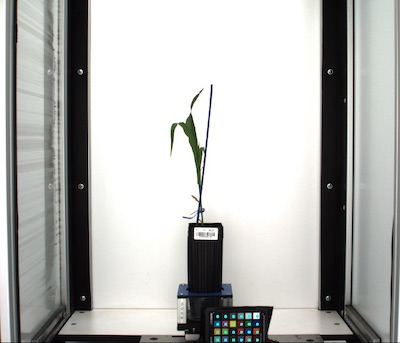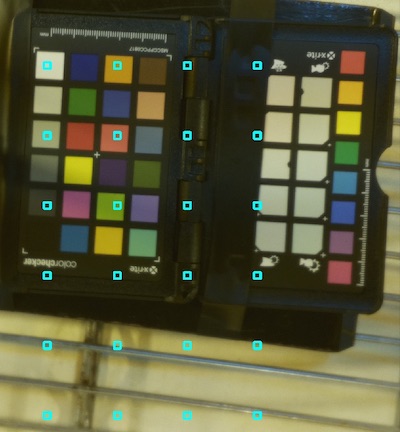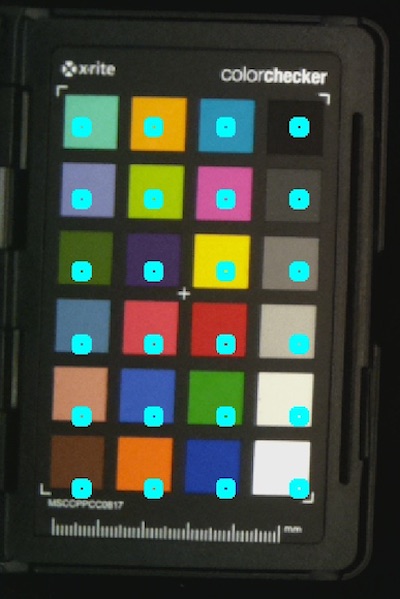Automatically Find a Color Card¶
Automatically detects a color card's location and size. Useful in workflows where color card positioning isn't constant in all images.
plantcv.transform.find_color_card(rgb_img, threshold_type='adaptgauss', threshvalue=125, blurry=False, background='dark', record_chip_size='median')
returns df, start_coord, spacing
- Parameters
- rgb_img = Input RGB image data containing a color card.
- threshold_type = Optional threshold method, either 'normal', 'otsu', or 'adaptgauss' (default theshold_type='adaptgauss')
- threshvalue = Optional thresholding value (default threshvalue=125)
- blurry = Optional boolean, if True then image sharpening is applied (default blurry=False)
- background = Optional type of image background, either 'dark' or 'light' (default background='dark')
- record_chip_size = Optional str for choosing chip size measurement to be recorded, either "median" (default), "mean", or None
- Returns
- df = Dataframe of all color card chips found.
- start_coord = Two-element tuple of the first chip mask starting x and y coordinate. Useful in create a color card mask function.
- spacing = Two-element tuple of the horizontal and vertical spacing between chip masks. Useful in create a color card mask function.
Important Note: This function isn't entirely robust. There are a few important assumptions that must be met in order to automatically detect color cards: - There is only one color card in the image. - Color card should be 4x6 (like an X-Rite ColorChecker Passport Photo). Spacing calculations are based on 4x6 color cards. Although starting coordinates will be robust for most color cards, unless an entire row or entire column of chips is missing. Missing chips may also skew spacing and can also skew starting coordinates. - Color card isn't tilted. The card can be vertical OR horizontal but if it is tilted there will errors in calculating spacing.
from plantcv import plantcv as pcv
rgb_img, path, filename = pcv.readimage("target_img.png")
df, start, space = pcv.transform.find_color_card(rgb_img=rgb_img)
# Use these outputs to create a labeled color card mask
mask = pcv.transform.create_color_card_mask(rgb_img=img, radius=10, start_coord=(400,600), spacing=(30,30), ncols=6, nrows=4)
Image automatically detected and masked

Image with multiple color cards

Tilted color card
